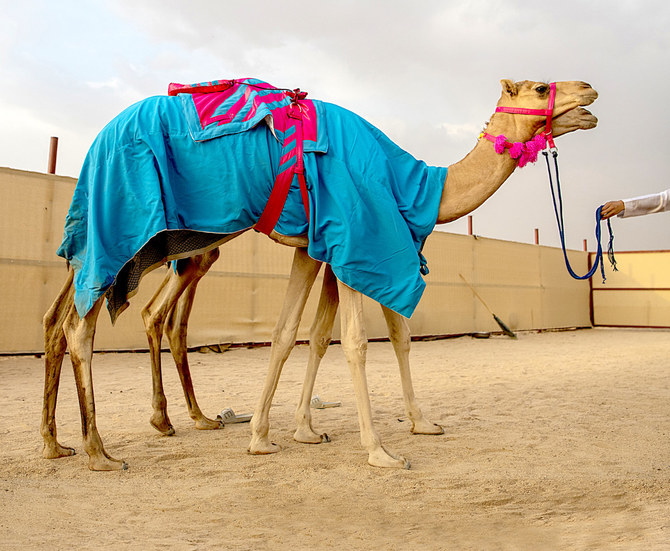RIYADH: Amal Misfer Al-Faran made history on Aug. 15, 2021, when she became the first female camel owner to take part in the prestigious Crown Prince Camel Festival in Taif.
The festival — a celebration of a central part of Saudi Arabia’s cultural heritage — was established in 2018 and this year’s event will feature 532 races with a total prize pool of SR53 million ($14.1 million).
The festival has helped to establish the Kingdom as the world’s premier destination for camel racing. Saudi Arabia heads the Camel Racing World Federation, founded in 2019 and based in Riyadh. In that same year, the Crown Prince Camel Festival set a new Guinness World Record when 13,377 camels participated in the event.
This year’s festival kicked off on Aug. 8 at Taif Camel Square.
Al-Faran had three camels running in the “Al-Haqayeq” category (for two-year-olds) as part of the festival’s preliminary stage — Al-Dana, The Pearl, and Jarrah. At one point in the 4-kilometer race, Jarrah led the field, but ultimately came in second.
HIGHLIGHT
The festival has helped to establish the Kingdom as the world’s premier destination for camel racing. Saudi Arabia heads the Camel Racing World Federation, founded in 2019 and based in Riyadh. In that same year, the Crown Prince Camel Festival set a new Guinness World Record when 13,377 camels participated in the event.
This year’s festival kicked off on Aug. 8 at Taif Camel Square and will feature 532 races with a total prize pool of SR53 million ($14.1 million).
Al-Faran told Arab News that she has spent years studying camel racing and learning how best to invest in the sport, which her family has enjoyed for generations.
“The feeling of being included in such a race is in itself a happy experience, but it is also a big responsibility because I feel like I’m representing women in this sport,” she said. “It’s an integral part of our heritage which we are proud of.”
Selecting which camels to buy can be a complex and lengthy process, as there are many sellers, she explained. To choose a racing camel, one should head to one of the more-reputable owners, and try to find a camel bred from a long lineage of racers. Buyers also need to consider which category they want their camels to race in — the two main divisions in camel racing are for camels less than five years old, and those aged five or above.
Apart from buying more camels, Al-Faran is also considering venturing into the potentially lucrative world of breeding.
Al-Faran hopes that her involvement in the Crown Prince Camel Festival is just the start of a long journey. She plans to participate in future events, and also to encourage other Saudi women to venture into the business and be part of this important facet of Saudi heritage.
She currently owns several camels, and says her husband and three children, whom she describes as her “support system,” all help to care for them.
“My kids recognize the importance of this sport in our family heritage, and their support fuels my enthusiasm and drives me to achieve more,” she said.
















